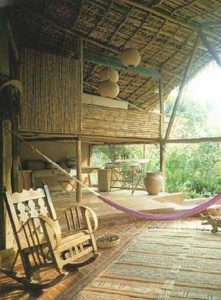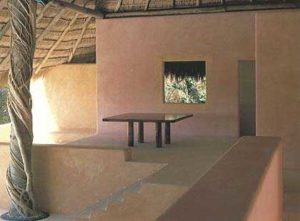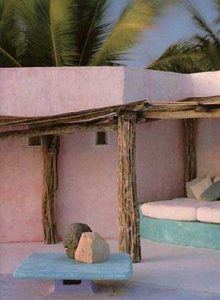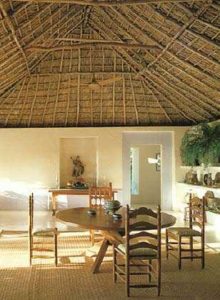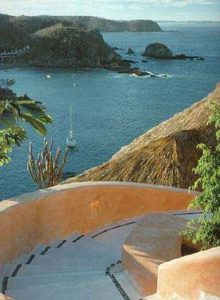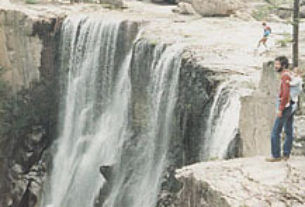From the book “CASA MEXICANA” ©1989 Tim Street-Porter, published by Stewart, Tabori & Chang, New York.
Reproduced by special permission of the publisher and author.
The climatic contrast between Mexico’s high-altitude cities on the Central Plateau and the coastal resorts which line the Pacific Coast is dramatic. A quick thirty minute flight on Mexicana transports the modern traveler from a cool, temperate environment to one of tropical humidity and a landscape of palms, jungle, and thatched palapa roofs.
Mexico is blessed with over 2,000 miles of Pacific coastline, with an endless variety of rocky headlands and sandy beaches sweeping in a lazy curve from Baja California in the Northwest to Chiapas in the Southeast, where the landscape is fully tropical.
In this southern coastal region, architecture appears to have undergone a melting process. Profiles are softer, and the usual definition between the interior and exterior becomes blurred. No longer needed as room enclosures, except to provide privacy and spatial definition, walls have seemingly unwrapped themselves from their usual rigid positions. They float off beyond the confines of interior space, dissolving gently into the landscaping, leading the eye outward to the ocean view. Angles have been replaced by sensuous curves, whether defining the edges of a stuccoed banquette, or low, molded balustrades which punctuate changes of level. Overhead, the voluminous palapa roof is softly draped over low columns formed from palm trees, giving both a lofty interior space and a low, protective eave.
Houses of this kind can be found in most tropical countries. The lofty vented roof and open sides provide cooling ventilation. The thatch is watertight and snug, though it must be replaced every few years. In Mexico, simple indigenous pavilions of wood and thatch have existed along the coast for hundreds of years.
Other Articles from the ‘Architecture of Mexico’ Series:
The Houses of Luis Barragán -|- Architecture of the Hacienda


